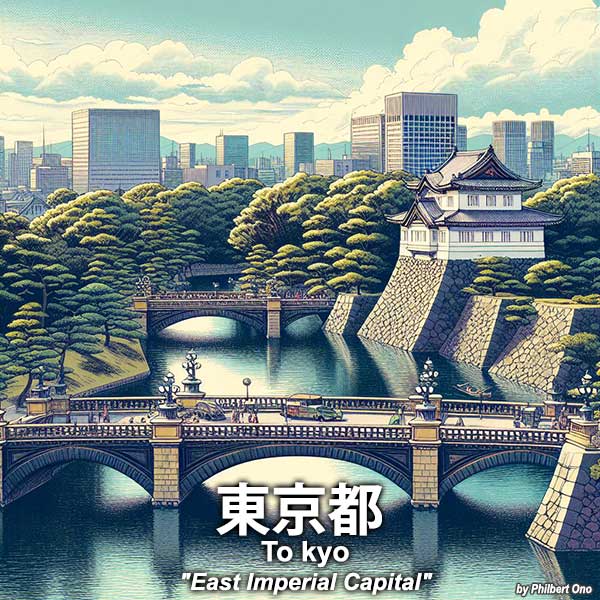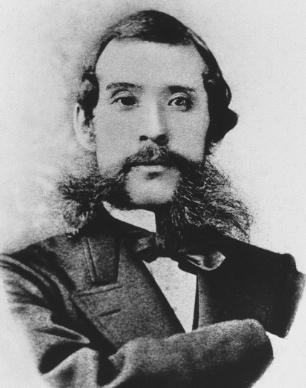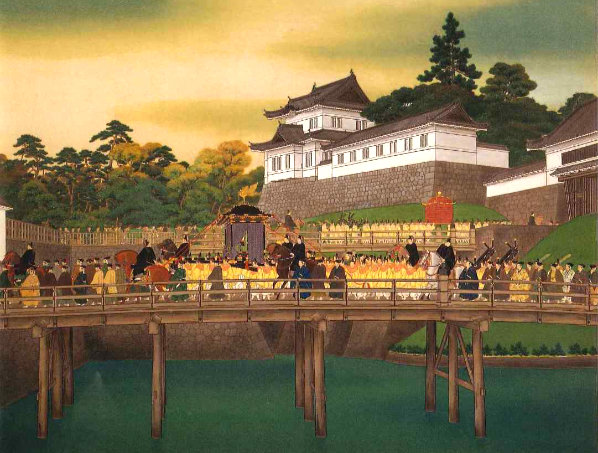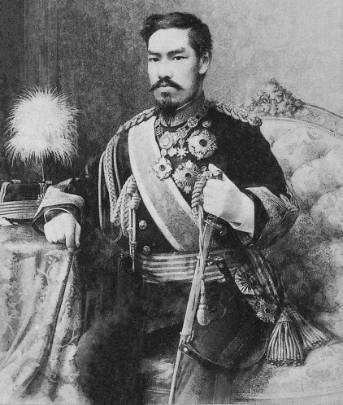TOKYO – East Imperial Capital 東京都

Out of all the 47 prefectural names, Tokyo (東京) and Kyoto (京都) are the easiest to understand in meaning. The 京 (kyo) kanji character indicates that the emperor lives in the city, making it the Imperial capital.
The convention of appending a cardinal direction to 京 (kyo) comes from China where it has cities like Beijing (北京 Northern Capital) and Nanjing (南京 Southern Capital).
Tokyo was previously named “Edo” (江戸), Japan’s samurai capital (Edo Castle) during the Tokugawa Period (17th to 19th c.). Renaming Edo to “Tokyo” was actually first proposed in 1823 by an academic named Sato Nobihiro (佐藤信淵 1769–1850) in his book titled Kondo Hisaku (混同秘策 Secret Strategy for Expansion). He advocated how Japan should be ruled and how it should conquer the world. He believed Japan had to become stronger domestically.
To this end, he proposed that besides Kyoto, there should be a palace-castle in Edo to be renamed “Tokyo,” and Osaka be renamed “Saikyo” (西京) as the West Capital. So there would be three capital cities in Japan with Kyoto, Tokyo, and Saikyo. (Osaka was never renamed.) He also advocated Japan’s conquest of the world by starting with Manchuria in China. Little did he know that such thinking would lead to Japan’s tragic downfall and ruin in the next century.

Sato’s proposal apparently influenced Okubo Toshimichi who supposedly read the book. Okubo was one of the leaders and policymakers of the Meiji Restoration in 1868 which overthrew the Tokugawa samurai government and restored national power to the emperor. Okubo held key government posts and became the most powerful man in the new Meiji government.
There was some debate over moving the emperor from Kyoto to Osaka as desired by Okubo, but Kyoto nobles vehemently opposed it and meanwhile Edo Castle opened up after a bloodless coup. Edo Castle and Tokugawa government buildings remained largely intact since the Tokugawa shogun surrendered in a bloodless coup in early 1868.
Maejima Hisoka, another Meiji government leader, proposed to Okubo to move the capital to Edo instead of Osaka. Okubo was convinced of the advantages of Edo and agreed to it.
On Sept. 3, 1868, an Imperial edict (江戸ヲ称シテ東京ト為スノ詔書) was issued to declare that the national government was to move to Edo, and Edo was to be renamed “Tokyo” as the largest city in eastern Japan where people from all over gathered.

Emperor Meiji, at age 16, moved from Kyoto to Tokyo on November 4, 1868 (Sept. 20 according to the old calendar) in an Imperial carriage entourage numbering over 3,000. He traveled on the Tokaido Road and stayed at shukuba lodging towns and visited major Shinto shrines and events held in his honor. (As a descendant of the Sun Goddess, the emperor is considered to be the highest ranking Shinto priest.) He arrived at Edo Castle on Nov. 26, 1868 (Oct. 13 according to the old calendar) after traveling for 22 days.

People in Kyoto were distraught over the move. Certainly a traumatic development for Kyoto which had been the Imperial capital since the 8th century where emperors lived for eleven centuries. Much of Kyoto’s national prestige was lost and the city’s population and economy started to decline until the city began to modernize with water supplied by manmade Lake Biwa Canal from nearby Lake Biwa in Shiga Prefecture and power generation in 1890.
The kanji characters used for Tokyo until the 1920s were 東亰. This might have been to avoid confusion with Dongjing (Luoyang or Kaifeng) in China which used the 東京 Chinese characters. However, the kanji characters for Tokyo were later designated as the ones used today 東京.
Old province name: Musashi-no-Kuni (武蔵国) and later Edo (江戸)
*The AI-generated image is for illustrative purposes only and may not accurately depict any particular place in the prefecture.
*Major reference sources: Official prefectural website, Japanese Wikipedia, other websites.
Origin of other prefectural names (etymologies)
Overview | Aichi | Akita | Aomori | Chiba | Ehime | Fukui | Fukuoka | Fukushima | Gifu | Gunma | Hiroshima | Hokkaido | Hyogo | Ibaraki | Ishikawa | Iwate | Kagawa | Kagoshima | Kanagawa | Kochi | Kumamoto | Kyoto | Mie | Miyagi | Miyazaki | Nagano | Nagasaki | Nara | Niigata | Oita | Okayama | Okinawa | Osaka | Saga | Saitama | Shiga | Shimane | Shizuoka | Tochigi | Tokushima | Tokyo | Tottori | Toyama | Wakayama | Yamagata | Yamaguchi | Yamanashi